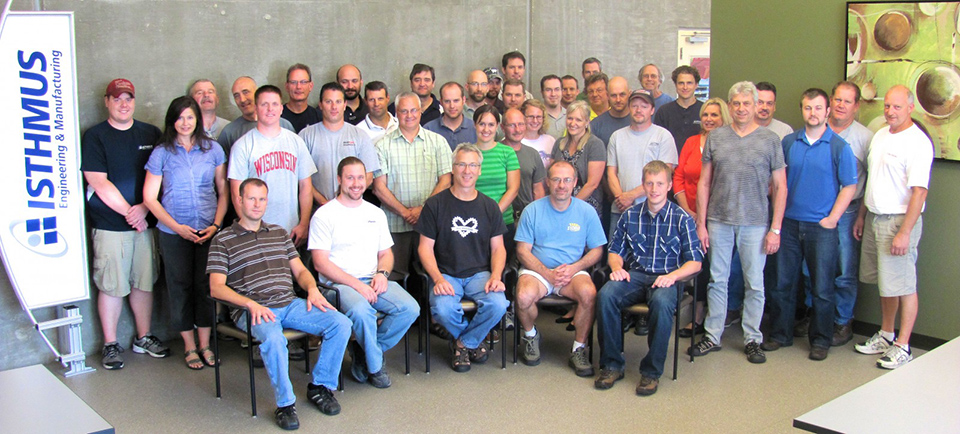
Cooperatives represent a growing segment of the economy with an estimated 30,000 enterprises and 100 million members in the U.S. alone. A great way to bring democracy into the workplace, coops can be built from scratch, but they can also be created by converting existing businesses into worker-owned cooperatives. For retiring business owners as well as entrepreneurs, selling a business to employees is a way to strengthen the business while getting a return on investment.
Melissa Hoover, executive director of the Democracy at Work Institute (DAWI), says that coop conversions are one of the most promising sources of new cooperatives as they already have customers, assets and employees, which makes it less risky than a startup. She also notes that those coops created from conversions are among the most passionate members of the U.S. Federation of Worker Cooperatives.
“They’re the most engaged and the most attentive to the cooperative forum, principles and movement building,” she says. “I speculate that’s because...to change something into a cooperative structure, they had to educate themselves about what that meant and connect themselves to movement organizations, models and peers.”
When converting an existing business into a coop, there are numerous questions that need to be answered. Do the employees want to create a democratic business? Are funds available for a buyout? How will the business be structured? How long will the transition be? Does the selling owner want to stay on? Though it takes time to work out the details, answering these questions is an essential part of the transition.
While every business has unique strengths and challenges, and there is no single way to create a cooperative, there is also no need to reinvent the wheel. Hundreds of worker-owned cooperatives have been created by converting existing businesses by following a series of steps.
How It’s Done
Shareable spoke with Joe Rinehart, Cooperative Business Developer at the Democracy at Work Institute to find out how to go from thinking about a conversion to opening the doors of a worker-owned business. He provided the DAWI conversion timeline below which is based on previous versions created by the Ohio Employee Ownership Center.
As Rinehart points out, these steps provide an overview of what a conversion might look like. It’s not a hard-and-fast template. Some of the steps overlap, some may be unnecessary, and the timeline for every business will vary depending on how large the company is, how long the selling owner plans to stay involved, how much training is required and more. Here, he breaks down each stage of the process.
STAGE 1: Deciding to Move Forward
What it entails: research and reading, worker ownership succession options workshop (for owner and their leadership team), initial owner conversation with employees, Worker Coop 101 workshop for the employees, owner and workers decide to move forward, select steering committee, contact outside transition support team.
This stage is to get the ball rolling and for the business owner to decide if they’re interested in converting. It’s also about educating everyone involved about the cooperative model, determining if there’s interest in becoming a coop. According to Rinehart, this is best done as a facilitated conversation with a skilled coop transition professional. If there is commitment on both sides, the next step is organizing the key players and moving the process forward.
One approach that Rinehart recommends is to start building a participatory workplace where leadership and management are shared as soon as possible. This can be done through practices including open book finances and letting employees have input in redesigning workflow.
“As you create a structure of participation,” says Rinehart, “you’re letting employees know they have a voice. It’s a really powerful tool in creating a workplace that can transition.”
STAGE 2: Getting Ready: Employee Training and Business Valuation
What it entails: financial training for employees, business and industry training, cooperative trainings for employees, business valuation process, business valuation or owner’s price, determine financing options, review and revise current business plan.
This stage is where investment in the transition occurs. Employees receive training so they can understand the finances of the business, the business is valued and financial options are presented. Rinehart recommends having a professional determine the value then giving employees the opportunity to contest the valuation it if need be. This is critical to clarify the process for the owner and employees, create a structure for moving forward, and give employees an opportunity to debate the valuation so they don’t feel like they’ve been taken advantage of down the line.
STAGE 3: Defining Structures
What it entails: document current management plan, draft cooperative by-laws, define post-transition management.
This is where the management plan, for both the transition and post-transition business, is laid out and those in management positions are trained in their duties.
“It’s important to note that [a worker cooperative] is not about making every decision democratic,” says Rinehart. “You want to open up the management process to be, not democratic, but participatory.” He continues, “It’s about deciding how you're going to make big decisions democratically, and management is one of those big ones.”
He explains that in most conversions the existing management structure is left in place but that the structure becomes about management and not about governance. The important thing is to document the management structure. At this point, everyone should be very clear what the rules are and if they don’t like the rules, they have a voice in changing them.
“The people you’re engaging in participation know how to make the business better,” Rinehart says. “They have knowledge about the industry and the business and they know the impact of their decisions.”
STAGE 4: Finalize the Transition
What it entails: transfer business ownership, negotiate final price, seek financing, future members approve final price and financing, structure, complete the transaction, transfer governance and elect new board, transfer management as necessary.
This stage is all about dotting your I’s and crossing your T’s. It’s where you finding the financing if necessary and pull the deal together. You will elect a board and do a first board training.
“It’s about making sure everything is legal, and clearly and carefully done so that you’re able to move on,” says Rinehart. “You close the door on the transition and effectively move forward as a business.”
STAGE 5: Follow Through and Monitoring
What it entails: ongoing training with current employees.
Once the worker coop has been launched, it’s important to have regular check-ins about the business and to maintain clear and open communication. The structures put in place are not only for current employees but for future employees as well. You want to make sure there are processes in place for training those employees in what it means to be a cooperative and lay out plans for growth. All of this requires ongoing training and monitoring.
“No structure is perfect,” says Rinehart. “You’re designing a human technology for participation and democratic ownership and no technology is perfect the first time out the door.” He adds that you’ll want to be able to take time to evaluate it, refine it and get help from people who are experienced with worker cooperatives. Among those are the DOWI and its associated organization the Democracy at Work Network, other cooperatives, cooperative developers, and members of Cooperation Works.
The Big Picture
Worker-owned cooperatives, whether created from scratch or converted from existing businesses, are a central part of the sharing movement. As Hoover says, they’re the “original sharing platform.”
For those considering converting to a coop, Hoover recommends talking with other business owners who have made the conversion to see that it’s possible and that there are huge benefits to doing it. She also encourages business owners to think about what they really wanted to build and where it’s going to go after they’re gone.
3 WAYS TO SHOW YOUR SUPPORT
- Log in to post comments














